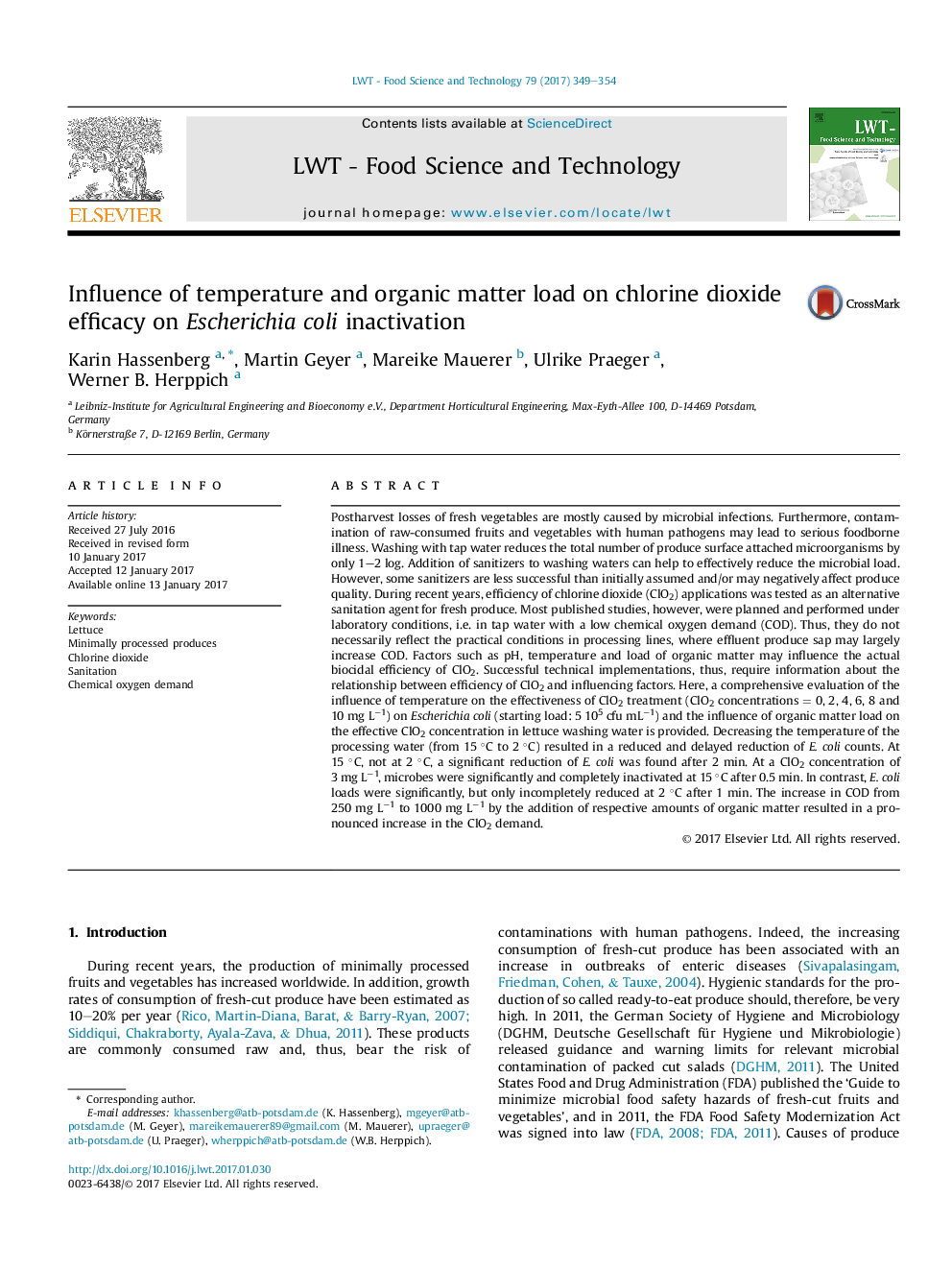| کد مقاله | کد نشریه | سال انتشار | مقاله انگلیسی | نسخه تمام متن |
|---|---|---|---|---|
| 5768780 | 1628519 | 2017 | 6 صفحه PDF | دانلود رایگان |
- Decreasing the temperature of processing water resulted in a pronounced increase in ClO2 demand.
- Increasing organic matter content resulted in a pronounced increase in the ClO2 demand.
- ClO2 losses can be compensated by increasing of ClO2 concentration from 2 to 10 mg Lâ1 at low COD.
- Higher COD than 500 mg Lâ1 resulted in a permanent loss of ClO2.
- ClO2 operation is recommended to a second washing step after removing organic pollutants.
Postharvest losses of fresh vegetables are mostly caused by microbial infections. Furthermore, contamination of raw-consumed fruits and vegetables with human pathogens may lead to serious foodborne illness. Washing with tap water reduces the total number of produce surface attached microorganisms by only 1-2 log. Addition of sanitizers to washing waters can help to effectively reduce the microbial load. However, some sanitizers are less successful than initially assumed and/or may negatively affect produce quality. During recent years, efficiency of chlorine dioxide (ClO2) applications was tested as an alternative sanitation agent for fresh produce. Most published studies, however, were planned and performed under laboratory conditions, i.e. in tap water with a low chemical oxygen demand (COD). Thus, they do not necessarily reflect the practical conditions in processing lines, where effluent produce sap may largely increase COD. Factors such as pH, temperature and load of organic matter may influence the actual biocidal efficiency of ClO2. Successful technical implementations, thus, require information about the relationship between efficiency of ClO2 and influencing factors. Here, a comprehensive evaluation of the influence of temperature on the effectiveness of ClO2 treatment (ClO2 concentrations = 0, 2, 4, 6, 8 and 10 mg Lâ1) on Escherichia coli (starting load: 5 105 cfu mLâ1) and the influence of organic matter load on the effective ClO2 concentration in lettuce washing water is provided. Decreasing the temperature of the processing water (from 15 °C to 2 °C) resulted in a reduced and delayed reduction of E. coli counts. At 15 °C, not at 2 °C, a significant reduction of E. coli was found after 2 min. At a ClO2 concentration of 3 mg Lâ1, microbes were significantly and completely inactivated at 15 °C after 0.5 min. In contrast, E. coli loads were significantly, but only incompletely reduced at 2 °C after 1 min. The increase in COD from 250 mg Lâ1 to 1000 mg Lâ1 by the addition of respective amounts of organic matter resulted in a pronounced increase in the ClO2 demand.
Journal: LWT - Food Science and Technology - Volume 79, June 2017, Pages 349-354
